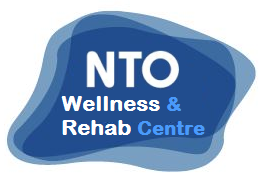 d many clients seeking Physiotherapy and Massage Therapy come in to the NTO Wellness and Rehab Centre with the very common lower back pain, muscle strain or ache that has been triggered from some of the most common day-to-day activities in our daily lives. In some cases she has had clients come in to see her who have injured their back from working out, weight-lifting, doing dance aerobics and a variety of physical intense sports.
d many clients seeking Physiotherapy and Massage Therapy come in to the NTO Wellness and Rehab Centre with the very common lower back pain, muscle strain or ache that has been triggered from some of the most common day-to-day activities in our daily lives. In some cases she has had clients come in to see her who have injured their back from working out, weight-lifting, doing dance aerobics and a variety of physical intense sports.
Whether it is lifting the grocery bags out of the trunk of your car, lifting heavy boxes when moving houses or picking up your 2 year old child when walking in the park – it is important to know the right technique for lifting in order to prevent back injury or muscle strain. Christine has put together a video that focuses on the proper lifting technique so that you can prevent injury when going about your daily errands and activities.
As a proactive measure for injury prevention, Christine would like to demonstrate a stretching exercise that you can do to improve your posture when going about your daily activities.
The severity of the lower back injury and/or muscle strain is determined based on the level of impact and intensity that was incurred when the muscle strain happened – a sudden sneeze could be all it takes to jolt your lower back in the wrong manner, or lifting a heavy box from a bad angle and not squared in front could cause some serious damage to your soft tissue and lower back muscles.
In most cases the soft tissue, ligaments and muscle may have been impacted resulting in the need for manual therapy, soft tissue manipulation, myofascial release – this is where NTO Wellness and Rehab Centre can assist in your rehabilitation and recovery process. However it is important to note that in some cases a lower back strain could be so severe that you are unable to walk immediately following the injury, in this case, you may have fractured a bone, herniated a disc or damaged your spine requiring an X-ray to confirm the fracture or disfunction – please seek emergency assistance from your medical practitioner or go to the nearest ER to prevent further injury.






